Remembering the Automat with Marianne Hardart & Lorraine Diehl
Revisit the golden age of the NYC automat and learn about its modern revival!


I first became intrigued with public bathrooms upon seeing the reappropriation of the Astor Place women’s room into a newsstand. Then I began to notice larger stand-alone beaux-arts buildings, and began to dig further. Today, the internet is littered with information about how to find bathrooms in New York City–nyrestroom.com, nyctoiletmap.com, restroomratings.com, and the global iPhone app SitorSquat by Charmin. But in real life, restrooms are harder to come by. In NYC as of April 2009, there were 666 park bathrooms, 78 subway bathrooms and the pay-per-use self-cleaning bathrooms in Herald Square. These figures have fallen sharply over the last half-century. In contrast, Singapore, which has a land area nearly 200 sq km less than New York City, has 29,500 public toilets.
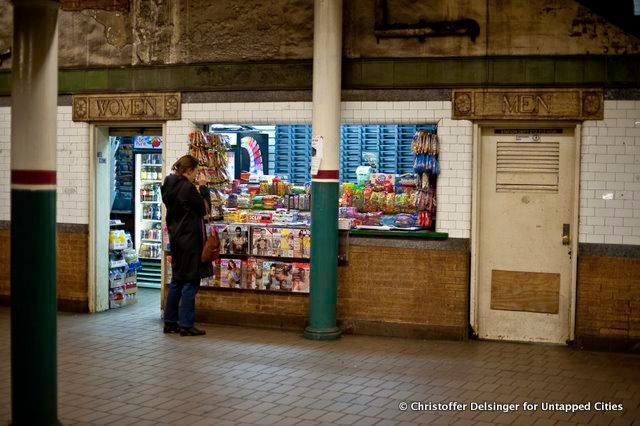
Should the provision of bathrooms be considered a public good? In Italy, cafes and similar establishments are required by law to permit anybody to use the bathroom, regardless of being a customer. Cities such as Paris, Amsterdam and Gent, Belgium all have street-side options. New York City has swung the pendulum on this issue, and the history behind the present situation is typical of New York: long, complicated and wrought with political drama.
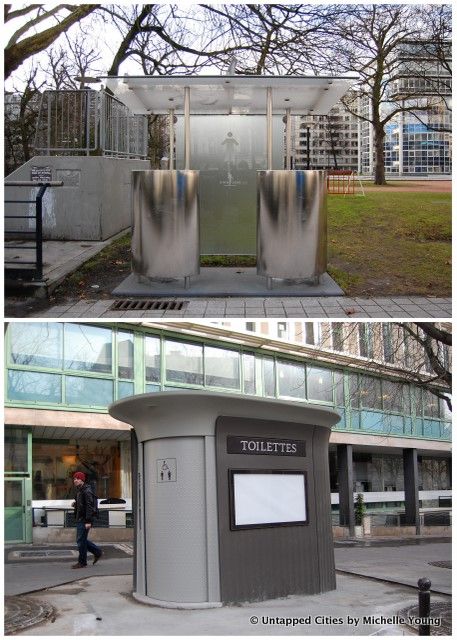 Top: Public Men’s Bathrooms in Gent, Belgium, Bottom: Public Toilets in Paris, France
Top: Public Men’s Bathrooms in Gent, Belgium, Bottom: Public Toilets in Paris, France
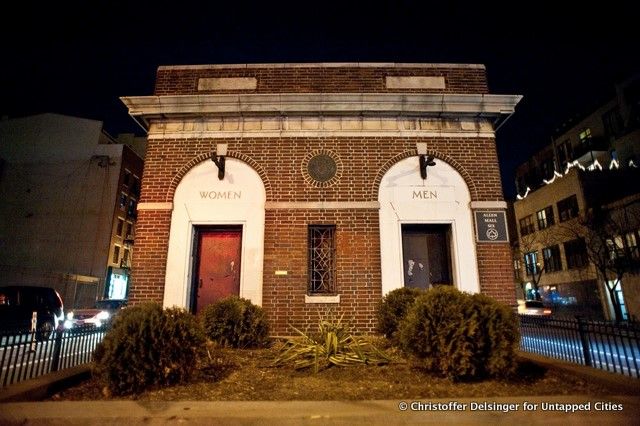
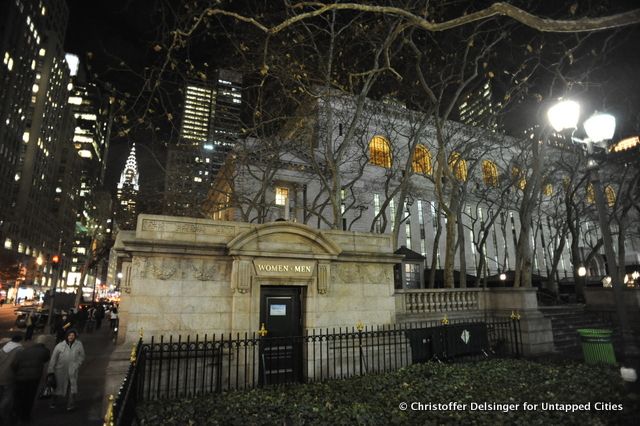 Bryant Park Bathrooms: Voted Best Bathrooms in the Nation by Citysearch
Bryant Park Bathrooms: Voted Best Bathrooms in the Nation by Citysearch
As the economy struggled in the 1970s, crime and vandalism increased in the subway system, and the majority of the bathrooms were closed to the public. In 1975, pay toilets were outlawed in response to the charge that they discriminated against women. Women always needed a stall, while men could relieve themselves anywhere, opponents argued. Other opposition included claims of discrimination against the disabled or that public restrooms would attract child molesters, vagrants and drug-dealers.
Mayors David Dinkins, Rudy Giuliani and Michael Bloomberg have all attempted to address the dearth of toilets, which the New York Times has termed “among life’s eternal mysteries.” Plans during Mayor Guiliani’s term were scrapped for fear of contract monopolies, and then later, although money was budgeted by the city council for toilets, the administration never acted upon it. Mayor Bloomberg finally signed a deal with Cemusa to install public pay-per-use toilets and new street “furniture”–you’ve probably noticed the new fancy bus shelters and newspaper stands.
Unfortunately, the pay-per-use self-cleaning toilets at Herald Square were not popular or cost-efficient, with focus groups reporting that users had a “profound mistrust of automation in the toilet sphere.” They have been replaced with manually cleaned toilets that nonetheless still look “space-age.” My hunch is that New Yorkers just like to be scrappy or in-the-know, like this Yelp user’s rating of best bathrooms in NYC ranging from Pottery Barn to the W Hotel. Or think about Seinfeld’s George Constanza who bragged “Anywhere in the city–I’ll tell you the best public toilet.”
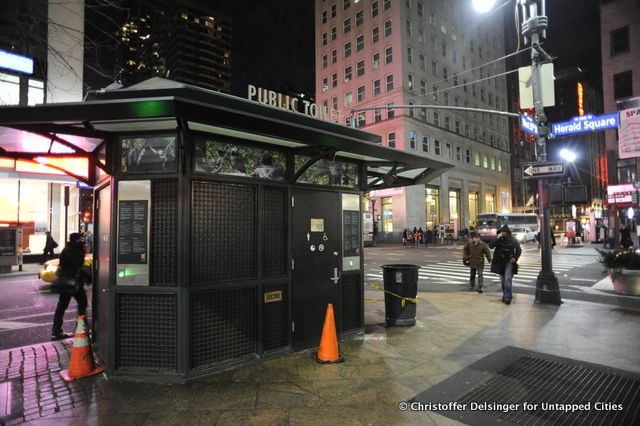
 Herald Square Public Toilets
Herald Square Public Toilets
In 2020, the Herald Square public toilets were renovated and are no longer pay-per use.
Get in touch with the author @untappedmich and the photographer at https://christofferdelsinger.wordpress.com/
Subscribe to our newsletter